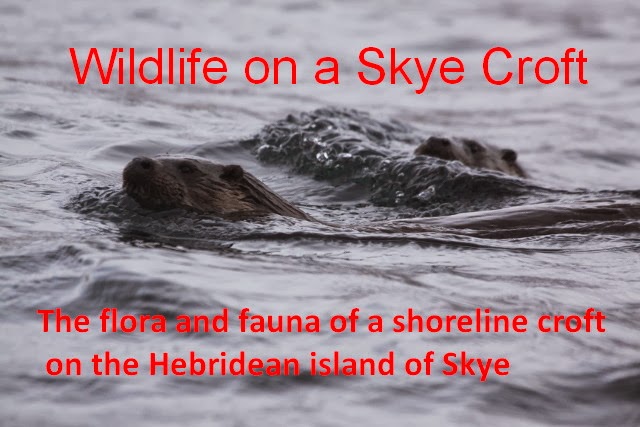All the orchids are now in flower except for the single plant of small white orchid which first appeared last year but this year is showing only 3 basal leaves. Flowering is late this year because of cold and wet weather in May and June, the impact of which can be seen in a vegetable garden that is far from healthy; we should be eating broccoli by now but the plants have made no growth, and of the Maris Piper seed potatoes over half look to have rotted in the cold, wet earth. All very frustrating and we will have to rely on the supermarket this year, but for those living here a century or so ago a crop failure of this type would have been devastating, This week has been much warmer, but growing time has been lost.
The average flowering date of the early marsh orchids this year was June 17, 12 days later than last year, and the second latest in the 7 years I have been measuring it. The latest date was in 2013, June 19. Surprisingly though, the total number of flowering spikes is a record, at 118, 23 above the total for last year which was the previous highest. When I have a moment I will try to find a correlation with the weather statistics because nothing else has changed, the croft management regime is just as it was.
Amongst the orchids are a few hybrids. My copy of a new BSBI publication, 'The hybrid flora of the British Isles' by Stace, Preston and Pearman, should be with me this week and I am keen to see what it says about marsh orchids (Dactylorhiza) which are probably one of the most difficult plant groups because they hybridise freely with each other and with other closely related groups such as fragrant orchids. Accurately naming marsh orchids and their hybrids is like a Sudoku puzzle where a printing error has missed a few key numbers and it becomes insoluble.
In flower now are crosses of northern marsh and heath spotted orchids, but I found today a cross between a heath fragrant and a heath spotted orchid. Last year there were three, one of which would have reflowered had the bud not been nipped off by a roe deer a couple of weeks ago, It looks very much like a heath spotted orchid except that the labellum has a slightly different shape, it is flushed pink (but then the parent often is) the spur is a little longer and the plant is strongly scented.
 |
| Heath fragrant orchid |
 |
| Hybrid - heath fragrant x heath spotted |
The hybrids on the croft are easy going compared to a complex site I visited yesterday near Strollamus. Last year I found a probable cross between Heath spotted and the striking, narrow-leaved marsh orchid (which we used to know as Lapland marsh orchid until its status was reassessed). In fact there was significant introgression there. Narrow-leaved on Skye is a majestic purple, the colour of the trim on Real Madrid's football shirts) on a white background with heavily spotted leaves; the middle lobe of the labellum is longer than the side lobes. Another characteristic is that the flowers on the spike are all to one side. Heath spotted has spotted leaves but the three lobes of the labellum are almost equal and the side lobes billow out. I found what I think was a clean hybrid between the two but lots of heath spotted had one-sided flowering spikes though with none of the other characteristics of narrow-leaved orchids.
 |
| Narrow-leaved marsh orchid |
 |
| Narrow-leaved marsh orchid leaf |
 |
| Heath spotted orchid leaf |
 |
| Heath spotted orchid |
 |
| Hybrid - narrow-leaved x heath spotted |
 |
|
| Hybrid - narrow-leaved x heath spotted |
|
To add further complexity I found a couple of plants of what I think are crosses between early marsh orchids and northern marsh orchids - the same pale pink colour and unspotted leaves of early marsh, but the labellum is not reflexed.
 |
| Hybrid - narrow-leaved x early marsh |
 |
| Hybrid - narrow-leaved x early marsh |
As a final comment, the roe deer which chopped off the hybrid is virtually a permanent resident. Once it gets in it seems unable to jump the fence to get out, even if it wanted to, with an excellent supply of grazing to hand. There could be a venison roast in the not too distant future.


















